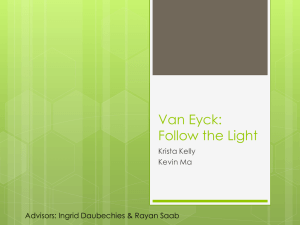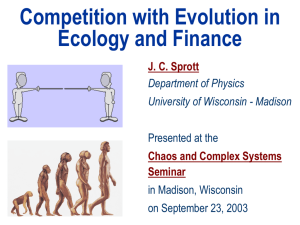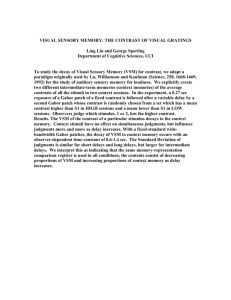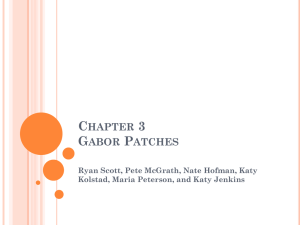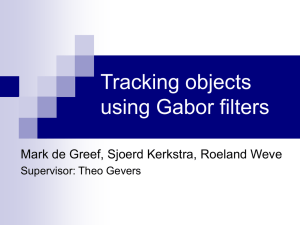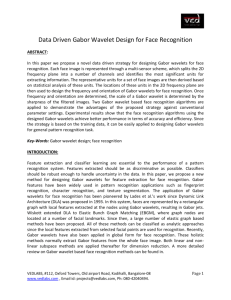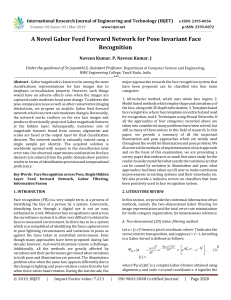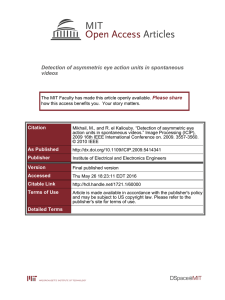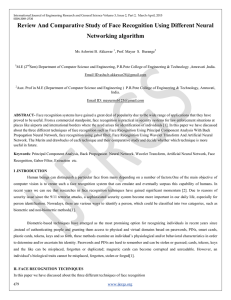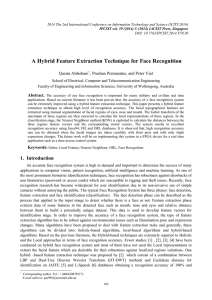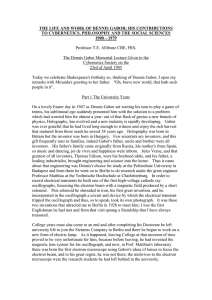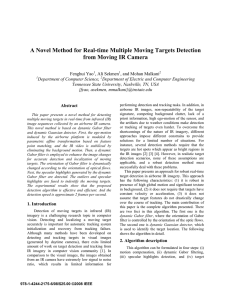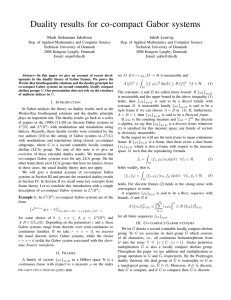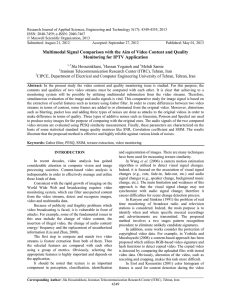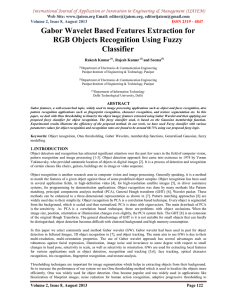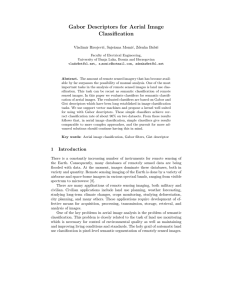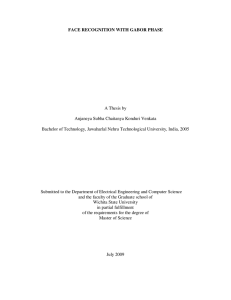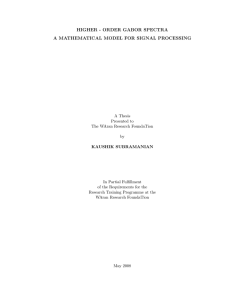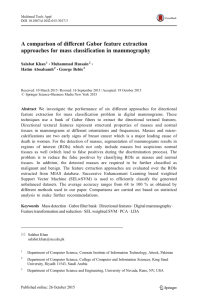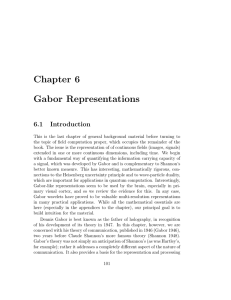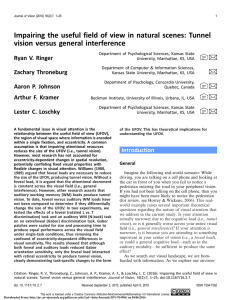CSE 672 Fall 2010 Assignment 1: The Bayesian Approach and...
advertisement
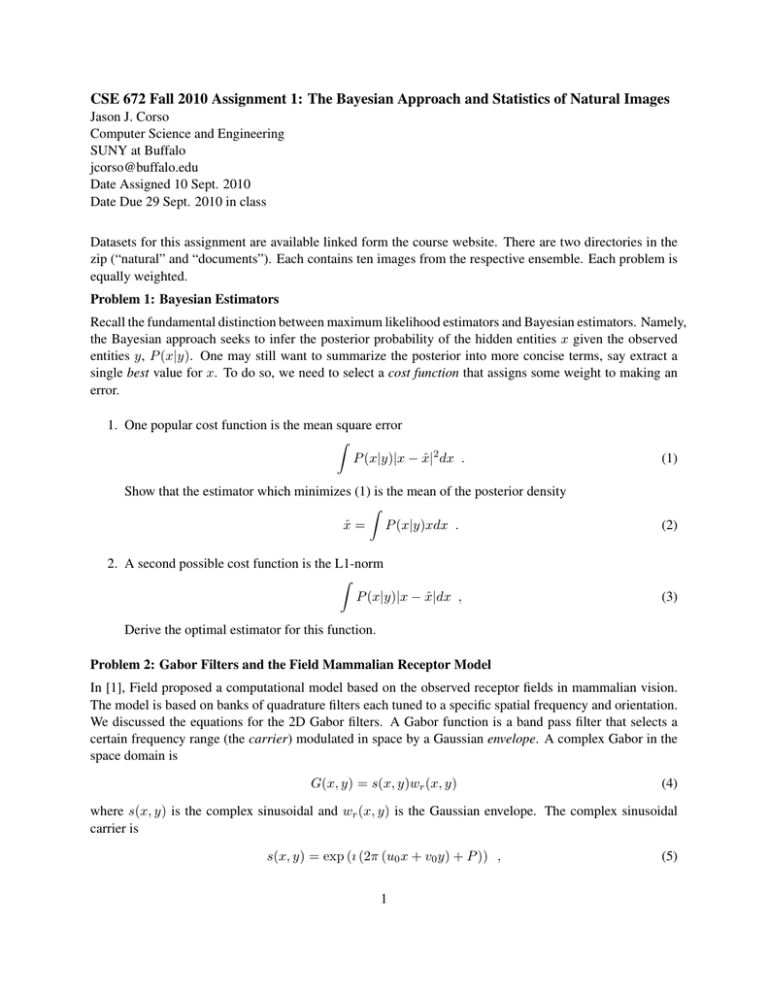
CSE 672 Fall 2010 Assignment 1: The Bayesian Approach and Statistics of Natural Images Jason J. Corso Computer Science and Engineering SUNY at Buffalo jcorso@buffalo.edu Date Assigned 10 Sept. 2010 Date Due 29 Sept. 2010 in class Datasets for this assignment are available linked form the course website. There are two directories in the zip (“natural” and “documents”). Each contains ten images from the respective ensemble. Each problem is equally weighted. Problem 1: Bayesian Estimators Recall the fundamental distinction between maximum likelihood estimators and Bayesian estimators. Namely, the Bayesian approach seeks to infer the posterior probability of the hidden entities x given the observed entities y, P (x|y). One may still want to summarize the posterior into more concise terms, say extract a single best value for x. To do so, we need to select a cost function that assigns some weight to making an error. 1. One popular cost function is the mean square error Z P (x|y)|x − x̂|2 dx . Show that the estimator which minimizes (1) is the mean of the posterior density Z x̂ = P (x|y)xdx . 2. A second possible cost function is the L1-norm Z P (x|y)|x − x̂|dx , (1) (2) (3) Derive the optimal estimator for this function. Problem 2: Gabor Filters and the Field Mammalian Receptor Model In [1], Field proposed a computational model based on the observed receptor fields in mammalian vision. The model is based on banks of quadrature filters each tuned to a specific spatial frequency and orientation. We discussed the equations for the 2D Gabor filters. A Gabor function is a band pass filter that selects a certain frequency range (the carrier) modulated in space by a Gaussian envelope. A complex Gabor in the space domain is G(x, y) = s(x, y)wr (x, y) (4) where s(x, y) is the complex sinusoidal and wr (x, y) is the Gaussian envelope. The complex sinusoidal carrier is s(x, y) = exp (ı (2π (u0 x + v0 y) + P )) , 1 (5) where (u0 , v0 ) and P define the spatial frequency and phase of the sinusoidal carrier, respectively. The Gaussian envelope is , (6) wr (x, y) = K exp −π a2 (x − x0 )2r + b2 (y − y0 )2r where (x0 , y0 ) is the mode, a and b scale the Gaussian, K scales the magnitude of the Gaussian, and the r subscript denotes a standard spatial rotation of angle r. 1. Implement the 2D Gabor filter. The spatial frequency and phase, and the envelope scales, rotation angle and magnitude should remain variable. You can use your language of choice (e.g., Python, Matlab, C, Java). Submit your code for this. 2. Design and implement the rosetta-like Field model. Use 4 octaves and 4 (pairs of) orientations. Submit your code for this. 3. Filter a few of the images from the “natural” set through your Field model. Plot the centers of each cell on the images. Submit the response images. 4. E XTRA Consider a 3D image volume. Can we extend the filters into this extra dimension? Derive the equations for them. Problem 3: High Kurtosis Experiments It was demonstrated in a few of the papers that evidence of non-Gaussianity and structure in the image ensembles can be found in the response histograms with high kurtosis (we didn’t cover it in detail in class). Kurtosis is the fourth-order central moment: " # 1 X (x − x̄)4 −3 (7) K= n σ4 Using the Gabor filters that you implemented for Problem 2, you will conduct an experiment to compare the response histograms and kurtosis estimates between the “natural” images and the “document” images. Select two Gabor pairs, a vertically oriented one and a horizontally oriented one. For each of the ten images in both ensembles, convolve the image with the the two Gabor pairs. 1. Plot histograms of the magnitude of the responses for the two ensembles. 2. Compute the kurtosis values for each image in both ensembles. 3. Please discuss, compare and contrast these statistics for the two ensembles. (a) Are the vertical and horizontal responses similar for the natural images? for the document images? (b) Are the kurtosis scores the same? If not, why? References [1] D. J. Field. Relations between the statistics of natural images and the response properties of cortical cells. Journal of the Optical Society of America A, 4(12):2379–2394, 1987. 2
![J [2037] MBA (Semester - 1 )](http://s2.studylib.net/store/data/010297621_1-2c050831213b35dcea207ddf5388a081-300x300.png)
